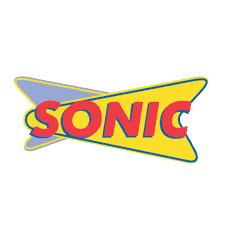The right – or wrong – colors can make or break your brand and marketing efforts. Today we’ll look at how color can be used conveys a fun, light-hearted ethos. That’s why we spend time sharing the principles of color psychology on branding.
Color can attract customers, or repel them. This is why design teams spend hours deliberating over color hues and palettes. You may not have realized it, but your company’s visual assets are an opportunity to communicate with your customers, collaborators, and market.
Color:
• Communicates.
Color communicates many messages. Both positive and negative. There’s a reason why stop signs are red and why corporations and banks often use blue in their branding. Without even realizing it, every day, we are surrounded by color symbolism that’s speaking to us on a deeper level.
• Elicits feelings and responses.
Think only text and spoken words impact our feelings? Color does this, too. Walk into a home decorating store and observe the specific colors commonly used to paint various rooms in a house.
Just seeing a specific color, can trigger a feeling and response. In the case of branding, that response is a decision (to download or enter one’s email address or purchase or click away).
• Distinguishes you in the marketplace.
Most companies are known for their colors. You can’t think of UPS without picturing their brown trucks and uniforms. This is intentional. UPS wants to have that effect. They want you to remember their color and they want to distinguish themselves in the delivery market.
But choosing the right colors for your brand can be a painstaking process. So, to help you, make the best decision, today’s Color Concept will help you understand the use of a few bright, cheerful colors in branding.
Bright colors, pink, orange, yellow have fun, light-hearted connotations, as explained in Color Concepts: Color Psychology Breakdown. But using these colors requires a fine balance of use and a strong awareness of color palettes.
All colors have positive and negative implications. We’ll briefly review both the positive and negative.
Pink
On the positive spectrum, pink conveys playfulness, unconditional love, softness. The negative implications of the color are childishness and immaturity.
Orange
The positive reflections of orange are warmth, innovation, confidence, optimism. The negative reflections of orange are immaturity, ignorance, sluggishness.
Yellow
On the positive spectrum, yellow conveys warmth, happiness, Optimism. And on the negative spectrum, yellow can convey frustration and anxiety.
Example of a company successfully using bright, fun colors in their branding
Sonic, the drive-in fast-food company located in 46 of the United States. 
When you understand color psychology and branding personalities, you can see why yellow is such a perfect fit for Sonic. Their branding is playful and fun. Even to the point, where they have servers on roller skates bringing food to cars (yes, many of their locations still do this).
Things to keep in mind when using these colors in your branding
*A little goes a long way
When designing your visual assets (including your logo, digital, and print material) don’t overdo it with colors. This is especially important with the bolder colors (like orange and yellow).
*Your color scheme must fit with your messages, mission, and vision
If your branding personality is fun, bold, playful, you’ll probably have success branding with one of these light-hearted colors. They stand out and speak loudly. Just make sure they’re communicating the right message for your company and that your colors are in line with your overall brand. You always want to have your messages, visual assets, and interactions in sync with one another. This is what creates a cohesive brand that’s respected. If you need help creating a cohesive brand, schedule a Brand Strategy Consultation.
